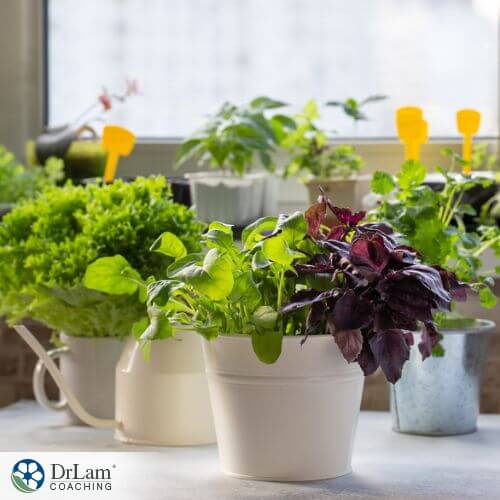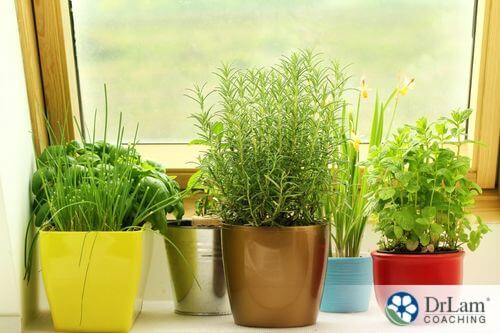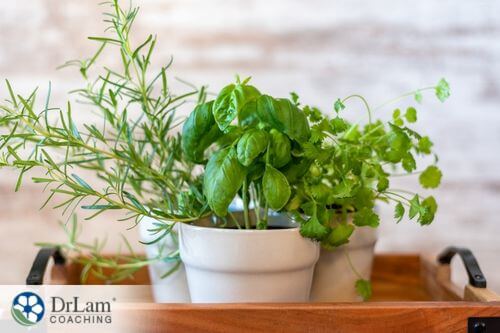 Gardens offer the opportunity to cultivate fresh, chemical-free vegetables, herbs, and fruits we can use to cook healthy, nutritious meals. Unfortunately, not everyone has the outdoor space required for a garden. If you lack access to land for planting or the soil in your yard is not conducive to growing, an indoor garden can help. The types of plants you choose for your garden should relate to the purpose of your garden, the space you have inside, and your overall experience with gardening and caring for plants.
Gardens offer the opportunity to cultivate fresh, chemical-free vegetables, herbs, and fruits we can use to cook healthy, nutritious meals. Unfortunately, not everyone has the outdoor space required for a garden. If you lack access to land for planting or the soil in your yard is not conducive to growing, an indoor garden can help. The types of plants you choose for your garden should relate to the purpose of your garden, the space you have inside, and your overall experience with gardening and caring for plants.
Relying solely on an outdoor garden can make it challenging to get the fruits and vegetables you need to help your body heal. An indoor garden resolves this problem by ensuring you can grow the delicious and nutritious vegetables, herbs, and fruits you need and want, regardless of season or the weather.
There are many benefits to including an indoor garden in your home. If outdoor gardening is out of the question for you for any reason, an indoor garden can provide you with fresh vegetables, herbs, and fruits throughout the year. Choosing an indoor garden rather than an outdoor variety offers you complete control over what you plant and the environment where your plants grow. Unlike fruits and vegetables from the store, produce from an indoor garden goes to your table without processing or harmful chemicals. This ensures you get the most nutritional value out of your harvest.
Another benefit to indoor gardening is versatility. With some exceptions, many varieties of produce, including fruits, vegetables, and herbs, grow readily and heartily in an indoor garden. The indoor garden environment ensures consistent access to the produce you might need all year round. Growing your own eliminates the need for trips to the grocery store, elevated "out of season" prices, and sparse availability.
Unfortunately, mass-produced fruits and vegetables may include pesticides and herbicides that may contain toxins and can increase stressors. These stressors can contribute to medical concerns such as an overactivation of the NeuroEndoMetabolic (NEM) Stress Response (your body’s natural process of fighting stress) and Adrenal Fatigue Syndrome (AFS). AFS occurs when stressors exceed the capacity of your body to compensate for and recover from stressors.
AFS is also often caused by poor nutrition, which leaves your body with few resources to deal with stress. However, while fruits and vegetables are often considered healthy, AFS can also make you more sensative to pesticide residues. This is where homegrown produce may help.
Also, the benefits of indoor gardening are not limited to plants you can consume. Growing plants in your home can also improve air quality, reduce air pollution, and create a calming environment. By reducing pollutants and toxins, indoor gardening can help support your Detoxification circuit, including your immune system and liver. It reduces the amount of new toxins these systems have to deal with, giving them time to flush out existing toxins.
Outdoor gardens are generally quite similar in form and function. Standard gardening involves planting in a dirt base in the ground or containers. Indoor gardening is far more diversified and allows for greater creativity. An indoor garden will also enable you to grow a wider variety of plants. This allows you to enjoy fruits and vegetables even if you live in a region that would not usually enable particular plants to grow.
Choosing an indoor garden opens the door to a variety of garden types. While each will allow you to grow various items you might not be able to otherwise, there are different types of indoor setups.
 Herbs are an excellent addition to a healthy balanced diet, but herbs can be difficult to grow without ideal soil and weather conditions. An herb indoor herb garden requires only a sunny spot in your home to produce delicious, healthy herbs all year long.
Herbs are an excellent addition to a healthy balanced diet, but herbs can be difficult to grow without ideal soil and weather conditions. An herb indoor herb garden requires only a sunny spot in your home to produce delicious, healthy herbs all year long.
Hydroponic gardens are another excellent indoor garden option if you do not have workable soil or you live in an area where gardening opportunities are limited due to space or weather. Hydroponic gardens do not use soil and require very little water. Instead, much of the water used to hydrate plants recycles within the tubing system of the garden itself. A hydroponic garden will allow you to grow and consume healthy, chemical-free vegetables all year.
Getting started with an indoor garden is far more straightforward than most people believe. The conditions your plants require will depend significantly on your space and the species of plants you hope to grow. And it's also important to remember that certain species of plants, such as those that require space to crawl (watermelons, pumpkins, zucchini, etc.) or those that need colder environments, such as broccoli and brussels sprouts, will not do well in an indoor garden. Some plants, such as fruit trees, require more space than most homes have. That said, many fruits, vegetables, and herbs are fair game. Below are a few general things to consider when getting started with an indoor garden.
The amount of light necessary for successful indoor gardening depends on the type of plants you choose and the lighting conditions in your home. Because indoor plants will never have the same direct sunlight benefits as those outside, you will need to provide lights to mimic outdoor conditions, especially for some light-loving plants. Most fruits and vegetables require a lot of light to grow well. Conversely, if the plants you choose are shade-loving, keep them away from windows that get sun all day.
If you choose a hydroponic setup, soil or another type of growth medium is not necessary. All other types of indoor garden will require some form of potting mix. The soil you choose can be tailored depending on what you grow, as some plants enjoy greater moisture levels than others.
Whether indoors or outdoors, all plants require water. However, each plant in your indoor garden may have different moisture requirements. Remember that one of the biggest challenges to indoor gardening is overwatering. It is important to research the planet species you choose, so you clearly understand how much water they need to thrive. It is also a good idea to use room temperature distilled water, as cold tap water can shock plants and sometimes contain chemicals that can harm them.
The ability to control the temperature and humidity in your indoor garden is a significant benefit of indoor gardening. Outside, you have no control over the temperature, rain, frost, and other significant weather or temperature changes that can adversely affect your plans. Inside, you can control how much moisture your plants get and how warm it is. If you choose plants that require high humidity, you could use a humidifier or set up an indoor terrarium.
 Certain plants are better suited for an indoor garden than others. The success of your garden depends on choosing plants that thrive in an indoor environment.
Certain plants are better suited for an indoor garden than others. The success of your garden depends on choosing plants that thrive in an indoor environment.
Examples of herbs that do well indoors include:
Placed in a sunny position inside, these herbs will continue to grow and produce throughout the year.
Vegetables that do well indoors include:
Finally, fruits that do well indoors include:
Getting started with an indoor garden easier than most people believe. If you are handy with tools and wish to assemble the pieces for your indoor garden, there are many plans online that can help you quickly and easily create a soil-based or hydroponic indoor garden. If you prefer, there are also several websites you can turn to that sell prefabricated indoor garden setups at a reasonable cost. These kits typically come complete with everything you need except for soil, water, and of course, plants.
If you experience signs and symptoms such as chronic exhaustion and feeling a general sense of malaise no matter what you do, AFS might be a factor. Indoor gardening can be a positive way to get healthier foods in your diet and improve the air in your home. But it is only one part of a plan to manage AFS that should include reducing stress, gentle exercise, improving your sleep, and taking the right supplements, in addition to dietary changes.
Before making any significant dietary change, it is essential to have a conversation with your primary care provider. They will assess your current medical condition and ensure that any supplements or changes you make to your diet will not adversely impact your overall health or negatively interact with any medications.
Having an indoor garden can help you start getting your health on the right track by ensuring you have an ample assortment of delicious, healthy fruits and vegetables at your fingertips. While not every plant will thrive indoors, many do. It can be a way to improve air quality and relieve stress as well.
If you would like to learn more about the effects of diet on stress, the team at Dr. Lam Coaching can help. Contact us today at +1 (626) 571-1234 for a no-obligation consultation or click here.
A significant contributor to adrenal fatigue syndrome is poor diet. Switching to an AFS diet helps reduce physical symptoms of AFS. 30 to 40% of an adrenal fatigue diet is healthy, organic vegetables, best grown in an indoor garden for consistent availability all year.
